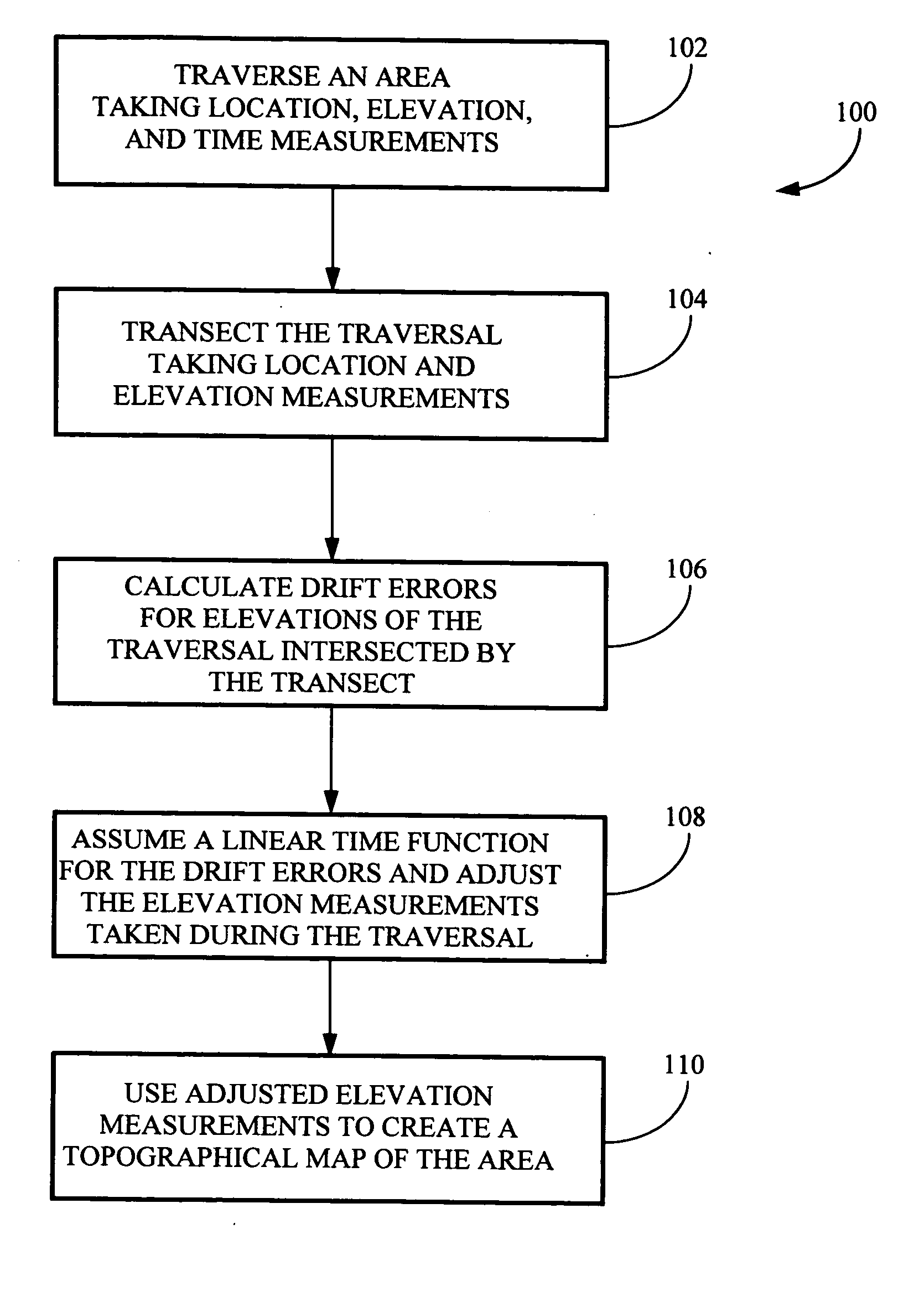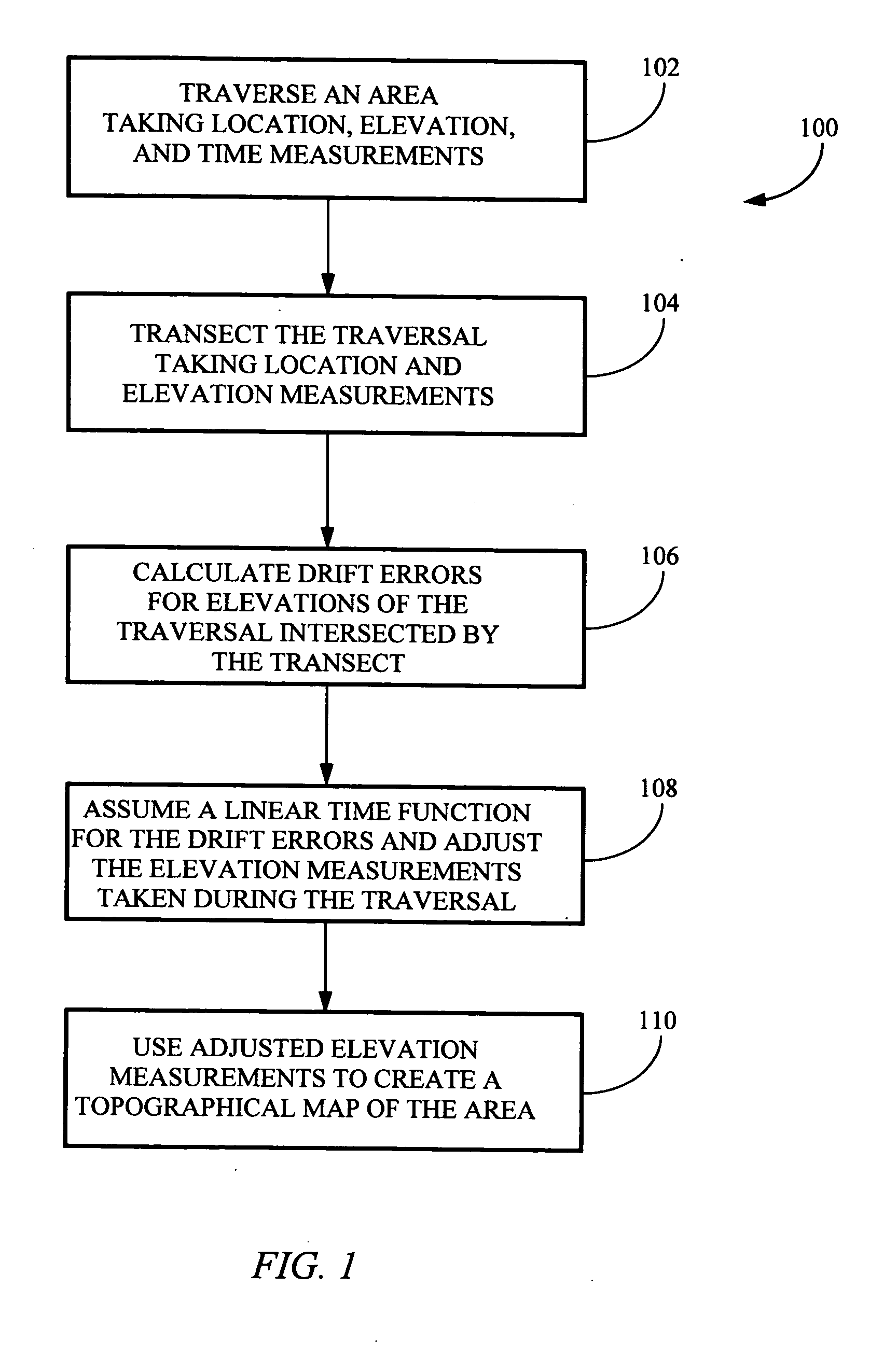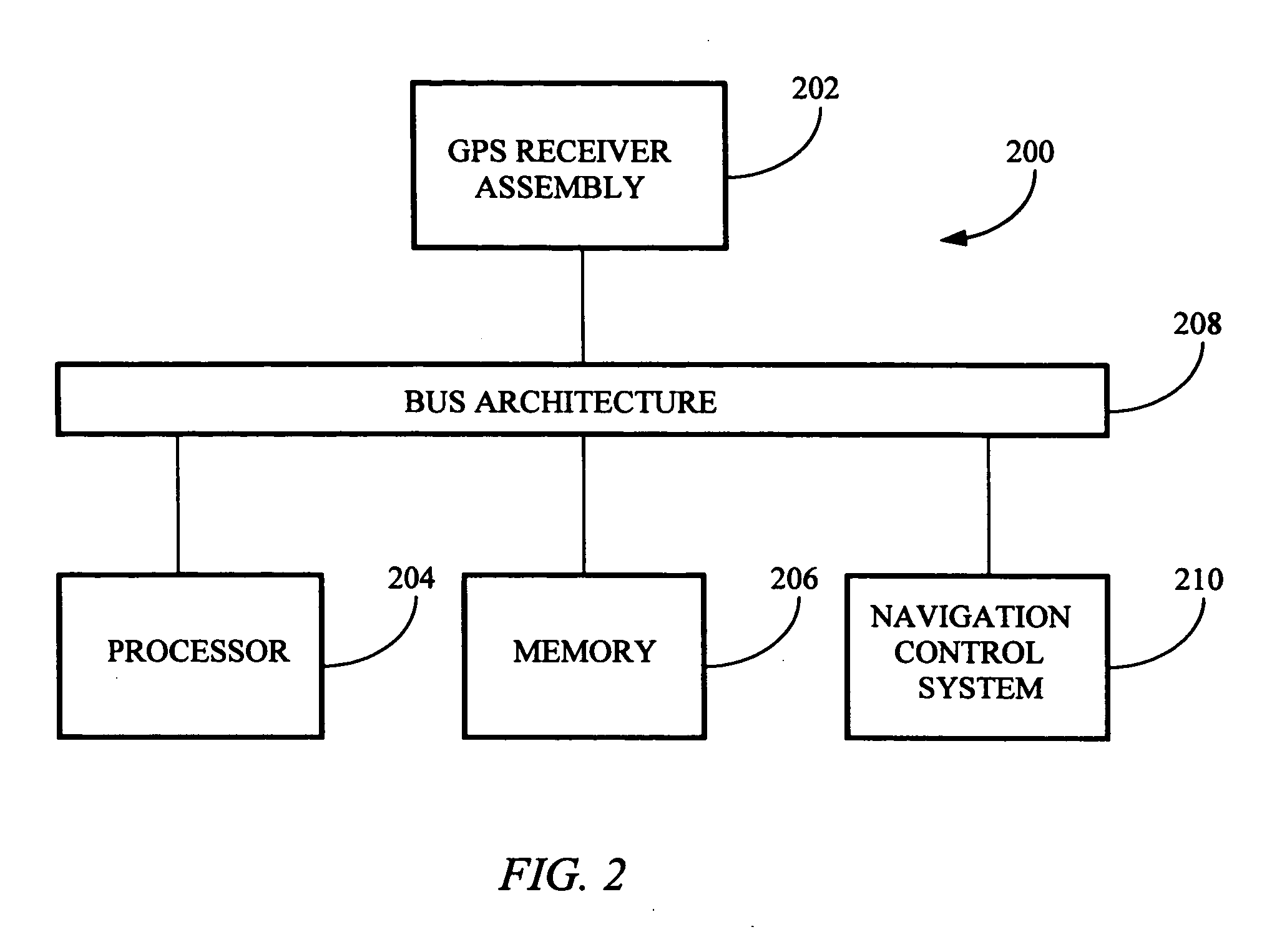System and method for creating accurate topographical maps using low-drift DGPS
a topographical map and low-drift technology, applied in the field of topographical maps, can solve the problems of limiting the area over which an rtk system may provide the accuracy desired to within a relatively small radius of a surveyed base station, and the accuracy of correction factors that are less accurate than desired, so as to achieve the effect of low position drift ra
- Summary
- Abstract
- Description
- Claims
- Application Information
AI Technical Summary
Benefits of technology
Problems solved by technology
Method used
Image
Examples
Embodiment Construction
[0015] Reference will now be made in detail to the presently preferred embodiments of the invention, examples of which are illustrated in the accompanying drawings.
[0016] Referring generally to FIGS. 1 through 3, a method for acquiring elevation data for an area suitable for producing accurate topographical maps in accordance with an exemplary embodiment of the present invention is described. Mapping ground elevations for a series of locations in an area, such as for creating a topographical map of the area, may be accomplished by traversing the area and periodically measuring positional and elevation data for the various locations in the area. Measuring the position and elevation of each location is typically accomplished using a GPS receiver, such as a wide area differentially corrected GPS receiver, or the like. When creating a topographical map of an area for slope sensitive applications, such as for analyzing water flow, drainage for agricultural fields, and the like, relative...
PUM
 Login to View More
Login to View More Abstract
Description
Claims
Application Information
 Login to View More
Login to View More - R&D
- Intellectual Property
- Life Sciences
- Materials
- Tech Scout
- Unparalleled Data Quality
- Higher Quality Content
- 60% Fewer Hallucinations
Browse by: Latest US Patents, China's latest patents, Technical Efficacy Thesaurus, Application Domain, Technology Topic, Popular Technical Reports.
© 2025 PatSnap. All rights reserved.Legal|Privacy policy|Modern Slavery Act Transparency Statement|Sitemap|About US| Contact US: help@patsnap.com



